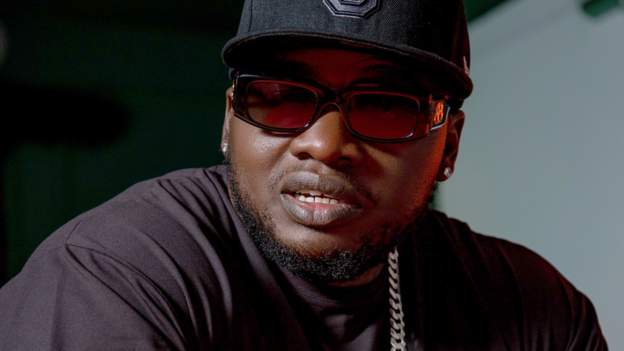Khaligraph Jones is an award-winning rapper from Kenya who has stood by his genre despite all the other musical trends making waves on the continent – and it has paid off.
He was born Brian Ouko Omollo and raised in the Kayole neighbourhood of Nairobi and says he was attracted to hip hop music from an early age.
But his success did not come easily.
People used to ask him why he didn’t just switch and do “Kenyan music”.
“I don’t know what kind of a sound they thought I was fit for, but consistency is key and we kept on pushing until they finally accepted me,” he says.
He first came to people’s attention by winning a high-profile freestyle competition.
He says his development as an artist has been a gradual process. He began building his reputation by featuring on tracks by other artists such as Kristoff and Stella Mwangi.
At the time he was also working as a bouncer because he couldn’t depend on music to sustain himself. In 2013 he quit bouncing “because people started to recognise my face”.
In 2018 he released his first solo album entitled Testimony 1990, a reference to the year of his birth. That same year he won best rap act of the year at the Afrimma Awards, and in 2020 he won best hip hop artist.
His second album Invisible Currency was released last year and achieved one million streams in six days.
Khaligraph Jones now feels he has paved the way for other rappers to come to the fore.
“After I did it I’ve seen dozens of others being able to also rise and also do their thing.”
So how did he come up with his stage name Khaligraph Jones?
“I used to do graffiti when I was in school, but graffiti with calligraphy. And I was also a big fan of the WWE (World Wrestling Entertainment). There was this big guy who used to go by the name of The Great Khali from India.
“He was a big, tall guy. I used to like The Great Khali. And because I was doing graffiti with calligraphy, I thought let me put this together and remove the y. Khaligraph! And I added Jones to it”.
Khaligraph Jones believes he has finished with phase one of his development as an artist.
“The first phase was take over Kenya, take over East Africa and get that continental recognition. Now the mission is to get more cross over collaborations and that’s what we’re working on right now.”
